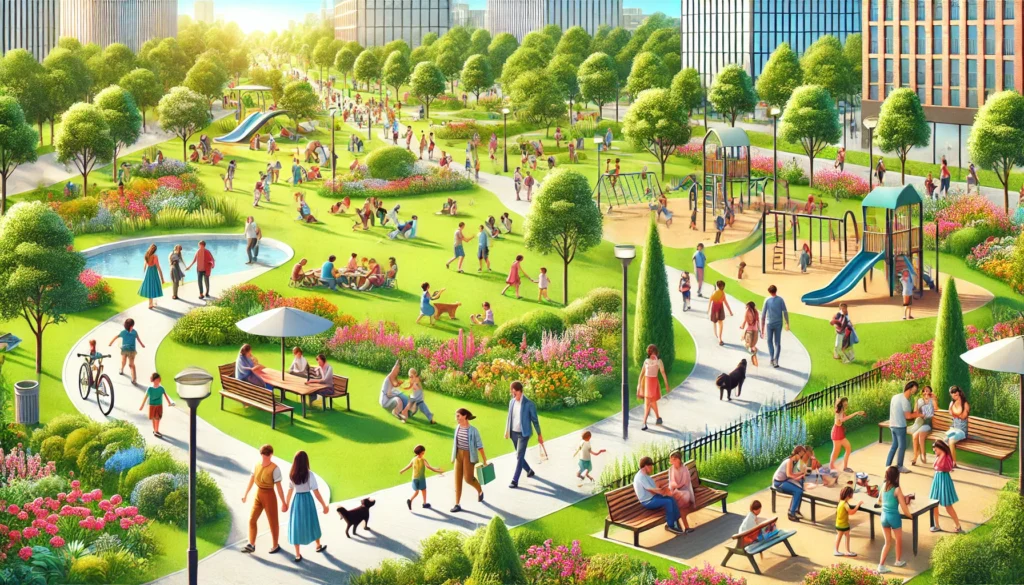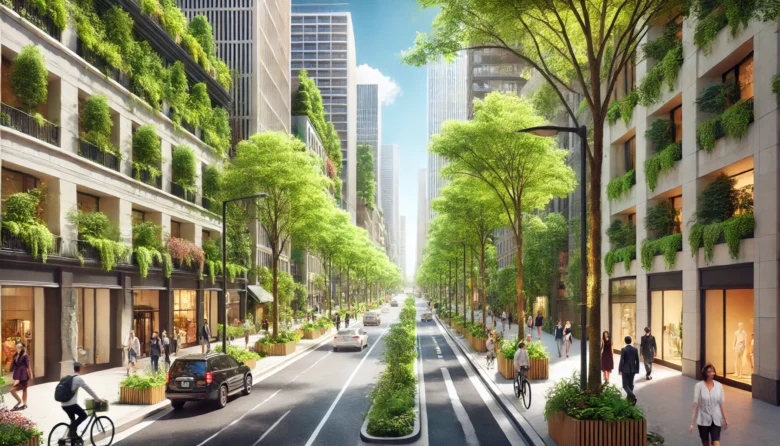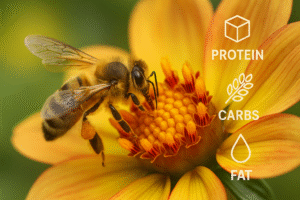Did you know? Studies show that spending just 20 minutes in a green space can significantly reduce cortisol levels, the stress hormone.
As urban areas continue to expand, the availability of open green spaces in cities often takes a backseat to new developments, higher buildings, and wider roads. Yet, these urban green spaces—parks, gardens, tree-lined streets, and even small patches of grass—are far more than mere “decoration” for the concrete jungle. They play an essential role in promoting mental well-being for city dwellers. Let’s explore the many ways these pockets of nature contribute to a healthier, happier mind.
The Link Between Green Spaces and Mental Health
Cities can be overwhelming. With constant noise, crowded streets, and unending responsibilities, stress often builds up, impacting mental health. Research shows a positive connection between urban green spaces and mental well-being. Simply put, green spaces provide an escape, a way to refresh our minds from the hustle and bustle of city life.
For instance, a study by the University of Exeter in the UK discovered that individuals living near green spaces reported lower levels of mental distress and higher life satisfaction. Urban green spaces do more than boost mood; they foster mental resilience and help lower the risk of issues like anxiety and depression.
Example: Tokyo’s Hibiya Park
Situated in the centre of Tokyo, Hibiya Park acts as a peaceful retreat for countless city residents and workers. Despite being surrounded by skyscrapers and bustling streets, the park offers tranquillity with its ponds, trees, and flowers. The park’s popularity underscores the importance of accessible green spaces in even the busiest cities, giving people a place to unwind and reset.

How Green Spaces Promote Positive Mental Health
Green spaces benefit mental well-being in various ways:
Reducing Stress and Anxiety
Green spaces help lower stress and anxiety, partially due to the calming effect of nature itself. Walking in a park or simply sitting on a bench surrounded by trees can slow the mind’s racing thoughts, which is especially helpful for those dealing with anxiety or high-stress jobs. Nature also has a grounding effect, making people feel present, mindful, and connected to the environment.
Encouraging Physical Activity
Engaging in regular physical activity is one of the simplest ways to support mental well-being. Parks and green spaces encourage people to walk, jog, bike, or engage in group exercises. Physical activity, in turn, releases endorphins, the body’s “happy hormones,” which elevate mood and alleviate feelings of depression.
A survey conducted in New York found that people were more likely to exercise regularly if they lived within walking distance of a park. This physical activity, encouraged by green spaces, significantly contributed to improved mental well-being.
Enhancing Social Interaction
Urban green spaces aren’t just about solitude; they also serve as hubs for social connection. Community parks often host events, gatherings, and even spontaneous meetings, helping people feel a sense of belonging and reducing social isolation. For example, children playing together at playgrounds, people walking their dogs, or groups practising yoga all create opportunities for people to meet and form connections.
Promoting Mindfulness and Cognitive Restoration
Spending time in green spaces can lead to mindfulness and cognitive restoration. The experience of being in nature forces the mind to slow down and focus on the surroundings rather than worrying about daily stresses. This restorative effect is especially beneficial for those in high-stress environments, providing a cognitive reset and improving focus, creativity, and productivity.
Improving Air Quality and Reducing Noise Pollution
Beyond mental benefits, urban greenery also improves physical well-being, indirectly contributing to better mental health. Trees and plants help purify the air by filtering pollutants, making city environments healthier for everyone.
Furthermore, green spaces help to block and absorb noise pollution, which can exacerbate stress and anxiety. The calming sounds of birds and rustling leaves can replace the honking horns and sirens, providing a natural sanctuary for the mind.
Case Study: The Garden City of Singapore
Singapore, a city known for its “garden city” vision, demonstrates how integrating green spaces within urban planning can positively impact mental well-being. In recent years, Singapore has focused on building parks and green corridors, ensuring that nature is accessible across the city. Initiatives like Gardens by the Bay, which combines extensive greenery with cutting-edge architecture, provide citizens with a peaceful escape from urban life. These initiatives have led to a better quality of life and increased satisfaction for Singapore’s population.
How Can We Create More Green Spaces?
With urbanization on the rise, cities must prioritize integrating more green spaces. Here are a few ways this can be achieved:
Community-led initiatives:
Local residents and organizations can lobby for and participate in creating green spaces, like community gardens.
Green rooftops and vertical gardens:
High-rise buildings can incorporate green rooftops and vertical gardens to increase greenery in compact urban settings.
Revitalizing unused spaces:
Empty lots or abandoned sites can be transformed into small parks or gardens, offering even more urban green space.
Governments, urban planners, and residents can work together to ensure that green spaces remain a priority within cities.
Conclusion
The benefits of urban green spaces go far beyond aesthetics; they are crucial for mental health and well-being. From reducing stress and fostering social connections to encouraging physical activity and mindfulness, these spaces provide countless benefits for city dwellers.
So, the next time you feel overwhelmed by city life, take a moment to visit your local park or garden. Remember, even a short time in nature can help refresh your mind and uplift your spirits. As cities continue to grow, let’s advocate for more green spaces to ensure our mental health is nurtured alongside urban development.
Author’s Note
Thank you for reading! If you’ve ever felt a sense of calm in a park or experienced joy in a city garden, you’ve already benefited from the magic of urban green spaces. Here’s to creating more spaces where nature and city life meet.
G.C., Ecosociosphere contributor.
References and Further Reading
- The Mental Health Benefits of Green Spaces – World Health Organization
- The Role of Parks and Green Spaces in Improving Public Health – National Recreation and Park Association
- Solution for Stressed-Out Americans May Lie in Their Backyard Bird Feeders – intoBirds. https://intobirds.com/solution-for-stressed-out-americans-may-lie-in-their-backyard-bird-feeders/
- Widdows, C. D. (2015). The ecology of large-spotted genets within an urban landscape. https://core.ac.uk/download/196549826.pdf
- Henderson-Wilson, C., Veitch, J., Staiger, P., Davidson, P., & Nicholls, P. (2017). Perceived Health Benefits and Willingness to Pay for Parks by Park Users: Quantitative and Qualitative Research. International Journal of Environmental Research and Public Health, 14(5), 529.
- The Benefits of Nature Therapy: Embracing the Outdoors for Mental Health. https://www.relationshipmatterstherapy.com/post/the-benefits-of-nature-therapy-embracing-the-outdoors-for-mental-health
- Easy Hacks for Bright Life: 10 Inspiring Places to Embrace Alone Time. https://www.brightlifeusa.com/2023/11/10-inspiring-places-to-embrace-alone.html
- Tree cover can help cool the urban heat island effect in the summer – Earth.com. https://www.earth.com/news/tree-cover-urban-heat-island/




